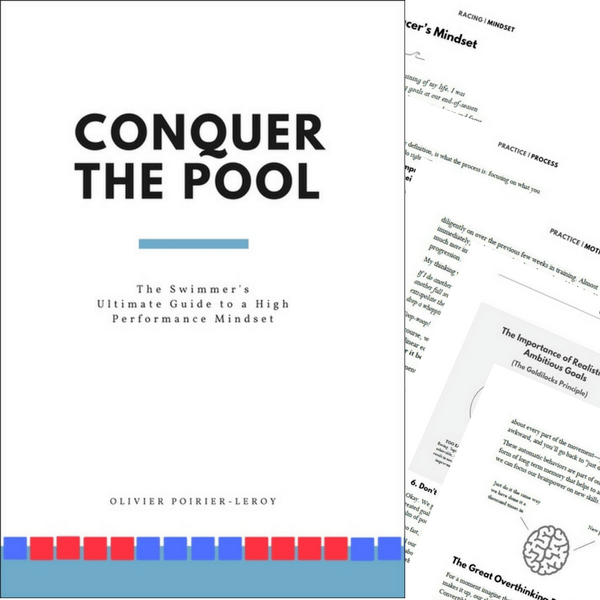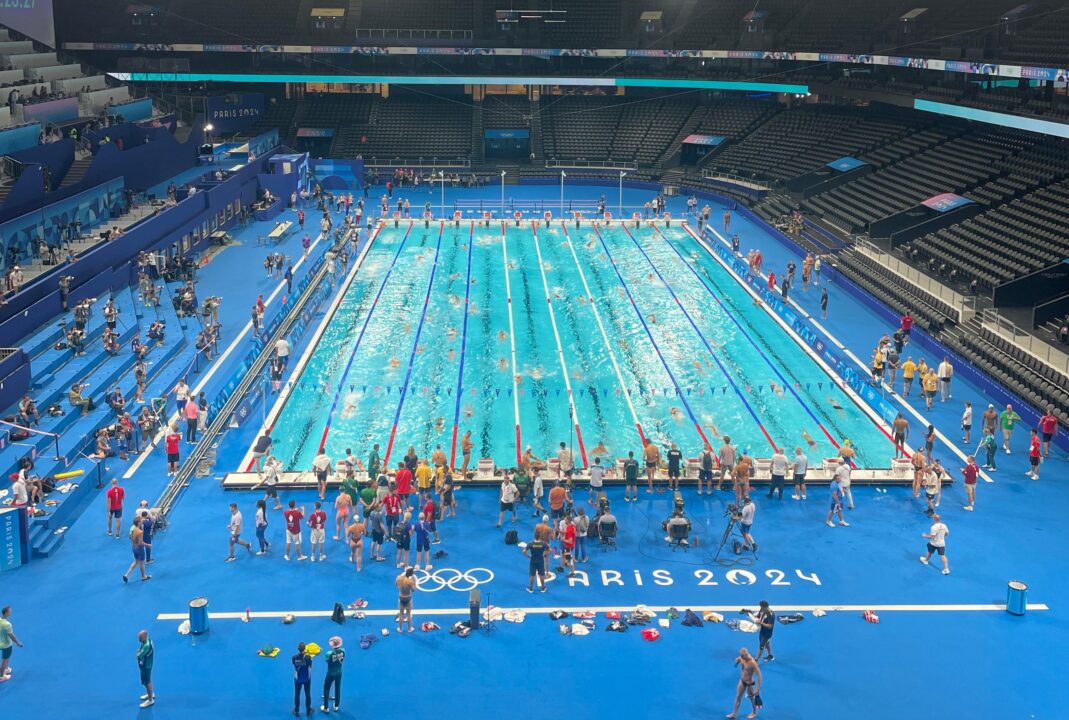Frustrated with losing count during your swims? Here are five ways to count your laps, from the simplicity of breaking up your workouts to the newest swim tech.
Swimming well requires excellent technique, timing your breathing, positioning your body properly, and of course, pushing the limits with effort.
This means that keeping count of your laps can sometimes fall outside of your locus of attention.
Losing count during your swims doesn’t just mean that you have an inaccurate set of results from your training session, but it also disrupts your flow and can be frustrating when trying to do an organized workout.
Whether you are doing workouts for distance, looking for a more detailed way to track and log your laps, or leading the lane for the first time during swim practice, we’ve got you covered.
In this guide, we’ll explore tips and tools to help you keep count of your laps in the pool.
Let’s dive in.
How to Count Laps During Swim Workouts
The best ways to keep track of laps when swimming include:
- Break up the swim
- Write out a swim workout
- Use off-set intervals
- Smart swim goggles
- Swim watch
Break up the swim
For swimmers who do workouts by total time or distance, breaking things up can not only make it easier to count all your laps, but also increase average effort and speed, helping you get a better workout.
A study published in the Canadian Journal of Applied Physiology took a group of cyclists and tested them after they performed two different workouts: a 30-minute time trial and two 15-minute time trials with a short break in between.
When broken in half, the cyclists significantly increased excess post-exercise oxygen consumption (EPOC).
And according to the National Academy of Sport Medicine (NASM), higher EPOC’s are linked to increased post-workout calorie burn, improved cardiovascular fitness, elevated hormones, and muscular strength.
So, how does this play out in the water?
Let’s say your goal is to swim 1,500 meters at the pool today.
Instead of trying to count each lap (60 laps in a short course pool or 30 laps in a long course pool) and swim it all in one go, break it up into any of the following:
- 15×100
- 3×500
- 30×50
Doing so makes it less likely that you will lose lap count (now you can lose count of repetitions instead 😉), and if you use an interval (100s on 1:30, for example), you can quickly count laps by measuring how many minutes you’ve been in the pool.
Faster swimming, better workouts, and more laps counted—sounds like a win to me!
Write out a swim workout
One way to reduce the likelihood of losing count of your laps is by having a pre-set workout when you show up to the pool.
Instead of counting laps and meters, you follow along a designated workout that sets you on the path towards your goal—distance or time—in the water.
For example, if your goal is to swim for an hour, write up a workout with sets that fill the entire hour. If you aim to swim a set number of meters, write a series of sets that add up to your target total.
Having a workout to follow along takes the guesswork out of what you are going to do at the pool that day.
Print off a workout and place it in a plastic insert to waterproof it, or use one of the many popular swim apps for swim watches/smart goggles to load up a workout for the day.
Use off-set intervals
A no-tech way to track your laps swum is by using the old analog pace clock at your local pool to inventory how many laps you have swum.
And how, you dare ask?
By using off-set intervals to help count how many laps and repetitions completed.
Here’s a simplified example.
Let’s say your goal today is to swim 2,000m, and you are going to break it up into 20x100s on a 2:00 interval.
So, every 2:00, on the red or blue top, you push off to do another 100m swim.
But here’s the problem: because you are pushing off on the same second hand each time, the possibility of losing count increases.
After not long, you will feel like you’ve swum seven reps, maybe 8. Not sure. Hopefully nine. But really probably six. Welp, let’s just call it ten.
A way to sharpen accuracy with lap counting is using the pace clock as a backup counter by using off-set intervals.
Instead of a 2:00 interval, use a 1:55 interval. Or a 2:05 interval.
Because once you get to mid-workout, and you start to wonder how many reps you’ve actually done, you can just count back the :05s on the pace clock and immediately count your reps and laps.
Following our example, if you swim 20x100s and do them on 2:05 (or 1:55), you know that if you are pushing off on the bottom (the :30 mark), that means you have completed six repetitions (6x :05 = :30).
Off-set intervals are one of the little tools swimmers have to help automate rep and lap counting so they can focus on swimming well instead of worrying about losing track of their swim workout.
Smart swim goggles
Smart swim goggles are the coolest swim tech to hit the water in recent years, having splashed on the scene in 2019 with the launch of the FORM Smart Swim Goggles.
The FORM Goggles (and later competitors like the FINIS Smart Goggles) are a revolutionary type of swim goggle with a heads-up display that shows real-time workout metrics inside the lens.
The digital display lists distance, time elapsed, stroke rate, splits, and with the launch of the FORM 2 Swim Goggles, even your heart rate. (For a more detailed review of the FORM 2 Goggles, you can check out this review I did on my personal website.)
And yes, smart swim goggles count your laps for you.
Each time you push-off the wall, the goggles measure the number of laps you’ve done and the distance you’ve swum. The FORM 2 Goggles have a customizable dashboard that you can set to prominently feature these metrics in your goggle lenses.
This is obviously not a free way to count your laps by any stretch of the chlorinated imagination (the FORM 2 Goggles retail for $249 at time of writing), but it is a highly accurate method to count laps, and a great way to compare how many laps you think you’ve done versus laps actually completed.
Swim watch
Smartwatches designed for the pool have exploded in recent years, with dedicated swim watches like the Garmin 2 and smartwatches with swim-functionality giving swimmers lots of options for tracking workouts and counting laps.
Swim watches are perfect for swimmers who want increased detail with their lap counting and want a quick and accessible way to check in on how many laps they’ve swum.
With a flick of the wrist, you get an instant overview of your swim workout, including the number of laps you’ve churned up and down the pool.
While everyone has their own preferences via budget and features, in my experience the Apple Watch is the best overall watch for swimmers, with customized pool sizes (you can set the watch to track pool sizes from 0m to at least 523m—I stopped running the tally at this point), a native Workout app that is extremely accurate at counting laps, and third-party app functionality for swimmers who want customized training plans, workouts, and community features.
Additionally, the Apple Watch is currently the only swim tracker that I know that properly measures and counts laps of kick when using a kickboard.
The key to ensuring that the lap counting feature is accurate is pushing off in generally the same way each time away from the wall and avoiding mid-lap turnarounds or stoppage.
While swim watches are very accurate (I regularly complete 25k weeks of swim training and my Apple Watch doesn’t miss a meter), they aren’t perfect.
But neither is my brain when doing longer swim workouts, so I’ll take the tech any day of the week!
Wrapping Things Up
Counting laps in the pool doesn’t have to be a tedious or menial task. And while some swimmers like the challenge of tallying up all the laps and meters they swim in a workout, for others, there are plenty of accurate methods to count laps.
By trying some of the tips above, you can not only get all of those laps in the pool properly attributed, but you can get more from your workouts, be more engaged and present, and even swim with confidence knowing that you are getting a superior session in the water.
Whether you prefer the simplicity of breaking up your time in the water, relying on high-tech solutions like smart swim goggles or a smartwatch, or using the old-school analog pace clock as your personal lap counter, there’s a strategy out there that fits your swimming.
Choose what works best for you, count those laps, and happy swimming!
ABOUT OLIVIER POIRIER-LEROY
Olivier Poirier-Leroy is a former national-level swimmer, author, swim coach, and certified personal trainer. He’s the author of YourSwimBook, a ten-month logbook for competitive swimmers.
 He’s also the author of the best-selling mental training workbook for competitive swimmers, Conquer the Pool: The Swimmer’s Ultimate Guide to a High-Performance Mindset.
He’s also the author of the best-selling mental training workbook for competitive swimmers, Conquer the Pool: The Swimmer’s Ultimate Guide to a High-Performance Mindset.
It combines sport psychology research, worksheets, anecdotes, and examples of Olympians past and present to give swimmers everything they need to conquer the mental side of the sport.
Ready to take your mindset to the next level in the pool?
👉👉 Click here to learn more about Conquer the Pool.

I like doing 125 yard splits, or 5 pool lengths. You end up at the opposite end of the pool each split. Every four of these is 500 yards. After every two of these groups, I do a short stretch and drink routine that takes about a minute. I do three repetions of these for a round 3000 yards. It’s pretty easy to keep track of that. And I’m 74 and easily distracted, so I need all the help I can get!
Just count backwards, i.e. down from 80 for 2km in a 25m pool. I feel it is all downhill after I get past half way. Easier to do negative splits too.